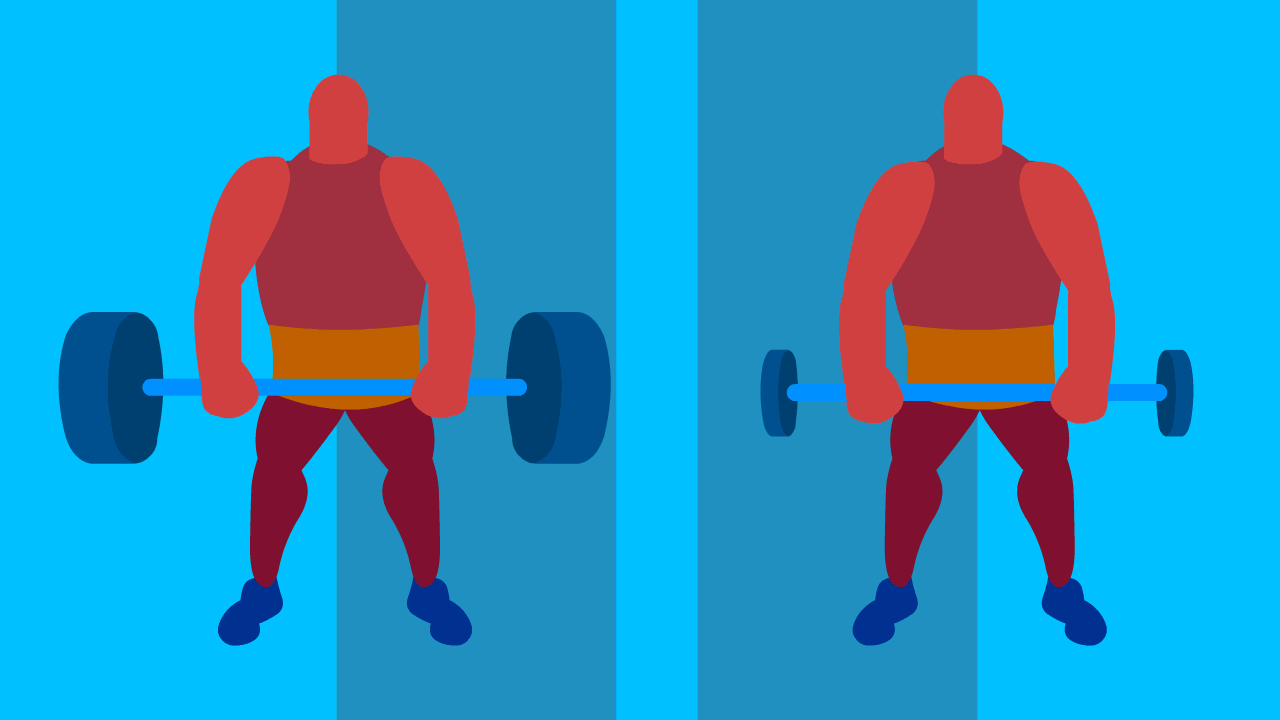-
chevron_right
What Does It Mean to Lift ‘Heavy’?
pubsub.dcentralisedmedia.com / LifehackerAustralia · Friday, 19 February, 2021 - 21:00 · 5 minutes
Lift heavy to build muscle: that’s advice you’ve probably seen in a million places. But how heavy is “heavy,” and how do you know if your workout qualifies?
There’s no specific number of pounds that will constitute “heavy” for everyone. What’s heavy for a teenage girl picking up a dumbbell for the first time will be a lot less than what’s heavy for a pro strongman. (If you do want to compare your lifts to other people, sites like Symmetric Strength can show where you stand — but please consider these comps as just for fun.)
Training “heavy” is shorthand for resistance training that is in a low-rep range and gets heavier over time. This is the type of training that gets you the biggest gains in strength and muscle size.
Training this way is not the only way to build muscle, but it’s a very effective one. So let’s look at what does and doesn’t count as training heavy.
How many reps are you doing?
Training for strength usually has you doing 1-5 reps in each set. Training for hypertrophy (bigger muscles) is often in the 8-12 range.
The truth is there isn’t much difference in results between the two; getting stronger gives you bigger muscles and getting bigger muscles makes you stronger. I’d say that as long as you’re doing 12 reps or fewer, you’re in an appropriate range to say you are training heavy.
Once you’re doing much more than that — 15, 20, 50 reps — you’re training your muscular endurance more than strength. You can build some strength this way, but it doesn’t really count as training heavy.
Does It Matter How Many Reps You Do When You Work Out?
So, your workout has you doing 4 sets of 5 reps for this exercise, 3 sets of 8 after that, and — oh, thank goodness — only 2 sets of 50 to finish it out. Well, hey, the good news is that these rep numbers aren’t just based on a...
Read moreHow hard does the set feel?
OK, let’s say you’re doing squats in sets of 8. That could count, but only if you’re loading the squats enough that it’s hard to do 10 of them.
For some exercises and some goals, you might be aiming for failure — literally, going until you can’t do another rep. An example would be if you’re doing 8 bicep curls and couldn’t manage a ninth.
But you can also get close to failure without quite going there. For example, if you’re doing squats, a set of 8 might be done at a weight that you could squeeze out 10 or 11 reps of if you really pushed yourself. That still counts as heavy training.
What doesn’t count is if you’re doing eight reps of goblet squats with a light dumbbell because it’s the only dumbbell you have, or because you’re intimidated about going up in weight. Heavy lifting is when you’re doing the appropriate rep range with a weight that is challenging within that range .
Are you increasing the weight over time?
The only way to keep the lift challenging as you get stronger is to keep increasing the weight.
To use our goblet squat example, maybe squatting with a 9 kg dumbbell was challenging the first time you tried it. But a week or two later, you can probably do the same eight reps with a 11 kg dumbbell. Before long, it may make more sense to do front squats with a barbell, to make it easier to add more weight. You’re lifting heavy.
But if you kept doing the same sets of 8 squats with the same 9 kg dumbbell, you’re not efficiently challenging yourself to build muscle or strength — you’re just doing an exercise that keeps getting easier. That’s still good for you, because it’s still exercise, but it no longer fits the description of lifting heavy.
Are you resting between sets?
This is where a lot of people go wrong, especially if they’re doing home workouts or are concerned about calorie burn during a workout. We don’t lift heavy for the calorie burn during the workout; we lift heavy to build muscle, and save the cardio for another day.
How Long You Should Rest Between Sets For The Biggest Training Benefits
Rest between sets and exercises has as large an impact on your fitness as the number of sets and reps do. If your breaks are too short, you rob yourself of their benefits, or worse, increase your risk for injury. If they’re too long, you’re not exercising hard enough. The...
Read moreIf you’re constantly working to keep your heart rate up, with little to no time to rest between exercises, you aren’t training heavy. More likely, you’re doing circuit training. Crossfit “metcon” WODs often fall into this category, as do many home workout videos that bill themselves as high-intensity interval training (HIIT). They’re usually not real HIIT, but that’s a rant for another time.
If you aren’t resting, that means you aren’t approaching each set of lifts when you’re fresh. Reducing rest times makes the workouts feel harder, but it also means you’ll be working with less weight. That means they usually don’t fit our definition. They might still help you build strength or muscle size, but not nearly as efficiently as lifting heavy.
If you take a few minutes’ rest between exercises, then you’re lifting heavy. A typical range would be 2-4 minutes between exercises that work smaller or fewer muscles (like curls or presses) and 3-5 minutes or more between sets of big compound lifts (like squats or deadlifts). With an appropriate rest time, you’ll be able to properly lift heavy.
The post What Does It Mean to Lift ‘Heavy’? appeared first on Lifehacker Australia .

